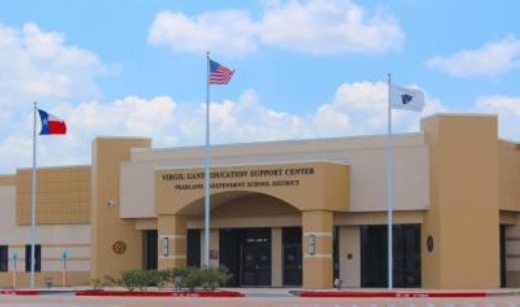The motion was made by Trustee Kris Schoeffler after a lengthy discussion by the board regarding the possible $18.5 million deficit the district could be looking at next year, if all potential options for funding fall through.
The most notable increase to the district expenditures for the upcoming school year is the 2% salary increase for teachers, as that cost the district $2.8 million. The board approved this at the May 18 meeting.
“We had to really scrub the budget. With 86% of our budget tied to payroll, and another big chunk tied to professional services, there’s not a lot we can do,” CFO Jorgannie Carter said.
The board has a few options to increase its revenue and reduce the deficit for the upcoming year. The district is required to shrink its Maintenance and Operations tax rate down $0.02 per state law, due to the growth in property values the district has seen. However, the district will request the board approves one golden penny on the tax rate, Carter said at the meeting. The one golden penny can be approved by the board with a majority vote and the penny will come at low cost to the taxpayer, and a higher cost to the state.
The district is also expecting a higher enrollment compared to the 2020-21 school year—albeit a lower historical enrollment—as the district believes enrollment was down due to COVID-19, Superintendent John Kelly said. Higher enrollment with a high attendance rate will secure the district more money from the state.
Another option to increase revenue is for the district to have a Voter-Approval Tax Rate Election, or VATRE, which is also triggered by a board vote. The district had a VATRE that failed in 2020, which Kelly believes was due in part to the size of the November 2020 ballot, as well as the pandemic, he said at the meeting. If the board voted to have the VATRE, and the VATRE passed in November, the district would have an additional $7.3 million toward its revenue.
The district also has the opportunity to use Elementary and Secondary School Emergency Relief, or ESSER, III funds, which are a state allocation, to alleviate the debt. The district has access to nearly $13 million of ESSER funds available, and would ideally use close to $8 million of it this year and to save the rest for future years, as the $13 million needs to last the district until 2024, Kelly said.
The district also has the option to dip into its fund balance. However, both the trustees and district would prefer not to lower its fund balance under the recommended 90-day balance.
If enrollment falls short for this next year and other options to increase revenue fall through, the district could begin looking at whether or not to cut staffing to match the need of a smaller student population and to decrease the deficit, Carter said.
“Those conversations will have to happen early on, once we begin the school year,” Carter said.





